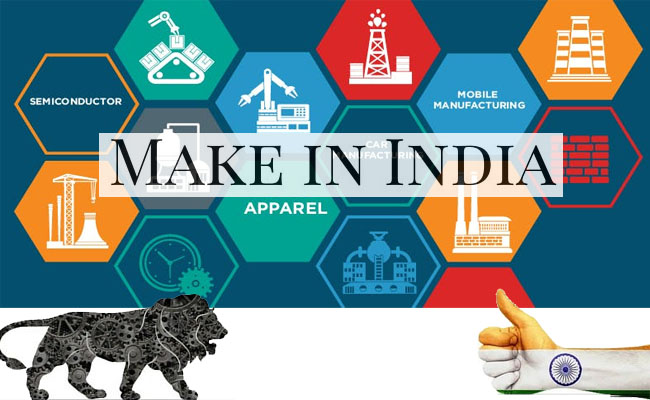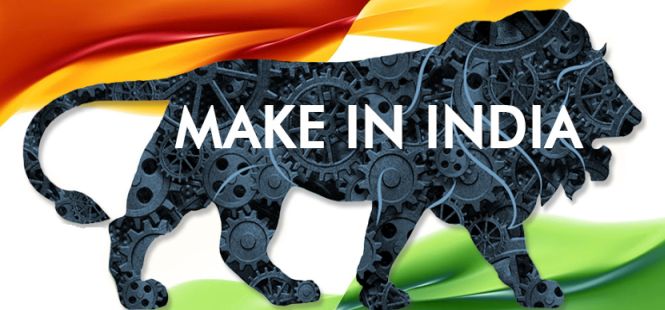‘Make in India’ is an ambitious initiative put forward by Prime Minister Narendra Modi in 2014. Even though much has been done for the successful implementation of the initiative, there are a lot of pitfalls left to be addressed.
What is “Make in India”?
In January of 2014, Indian Prime Minister Narendra Modi unveiled the “Make in India” (MII) campaign. In a speech to big corporate investors, he said:

“India is the only country in the world which offers a unique combination of democracy, demography, and demand,”
-Indian Prime Minister Narendra Modi
In the audience were CEOs from abroad — Maruti Suzuki’s Kenichi Ayukawa and Lockheed Martin’s Phil Shaw — and home, including Tata Group chief Cyrus Mistry, Reliance head Mukesh Ambani and Kumar Mangalam Birla of the Aditya Birla Group.
In its essence, this campaign aims to expand India’s manufacturing industry and make it a new global manufacturing centre. India’s manufacturing sector currently accounts for 16% of its GDP – the initiative aims to raise this share to 25% by 2025. Thus far, the program has prompted India to make some substantial reforms. In 2018, the World Bank ranked India 133rd for ‘ease of doing business’; in just a year time, India climbed up to 77th place. Despite these small victories, the country’s leaders will have to manoeuvre carefully to ensure the success of the initiative.
India’s Export Strategy: Is export-led growth a viable option?
Over the past 3 decades, high exports have fueled growth in many Asian countries, particularly in China. The Chinese strong manufacturing industry was a key factor in its economic success.
Although export-led growth has served emerging markets well in the past, it ultimately relied on high growth rates and demand for exports in richer countries. However, there are a few reasons why India’s growth strategy may not be dependent upon these factors.
Most importantly, developed economies’ growth rates have not recovered since 2008. Possible explanations are their high levels of debt, which impede borrowing and lending, and restricts the ability of governments to provide economic stimulus. In addition, many developed countries face the challenge of an increasingly ageing population, which will undoubtedly have a dampening effect on economic growth. Meaning that the demand for foreign goods in the developed countries will fall.
In addition, the threat of a trade war between India and the US is making the reliance on exports an increasingly risky mean of generating economic growth.

So, what does this mean for the “Make in India” campaign?
If the initiative is to effectively expand India’s manufacturing sector and stimulate growth, it cannot rely solely on demand for exports. It must be considered ways to tap into domestic demand as a source of growth. In 2015, consumer expenditure in India accounted for 59% of GDP; in China, for example, it accounts for only 39%. This is a promising indicator that domestic demand may be able to sustain a boom in Indian manufacturing.
Advantages of Make in India – Attracting Foreign Direct Investment (FDI)
Alongside transforming India into a new global manufacturing hub, the MII campaign also aims to attract foreign direct investment (FDI). In recent years, the FDI into India has increased – in 2019, it attracted 64.4 billion USD – and some have been quick to attribute it to the MII campaign. The data, however, may be misleading. A study published in 2016 by Rao and Dhar found that a large portion of the FDI in India accounts for mergers and acquisitions which did not contribute to an increase in production or GDP. In addition, a noteworthy fraction of capital flows into India was for the purposes of tax evasion.
If India wants to attract foreign direct investment, there are major changes that are required. It is vitally important that India takes measures to counter the volatility of its exchange rate. A volatile exchange rate makes foreign investors uncertain of the returns of their investments in Indian companies and infrastructure.
Roadblocks to the growth of the Indian manufacturing industry
Finally, to pave the way for the success of Modi’s MII initiative, many changes in the internal regulatory, economic and business environment are needed.
Ravi Aron, a professor in the Johns Hopkins Carey Business School, explains the four classes of deficits that stifle the Indian manufacturing industry.
- First, are the factors of production. India faces crippling shortages in, for example, power. Businesses are forced to rely on expensive and inefficient ways of producing power. Adding to this, India’s labour laws make it hazardous for businesses that face seasonality in their demand to set up mass production facilities.
- Second, are the enablers of production — such as surface transport and ports. Manufacturing requires a significant presence of infrastructure. This, however, is absent in India and the current property rights laws are not making the investment perspectives any brighter.
- The third set of issues is related to the Indian legislative system. Laws are made to suit the extremely myopic objectives of the regime in power. An interesting case is the one for Vodafone’s retroactive taxation. Even after the Supreme Court ruled that the company did not owe taxes, Parliament passed a retroactive law to claim the money from Vodafone in what must surely seem to foreign investors like state-sponsored theft.
- Finally, there is chronic corruption, that will hardly be evaded.
“Make in India” Policy – Wrap Up
Ultimately, the ‘Make in India’ initiative can bring in more FDI, make the sector more competitive, create new jobs and enhance the quality of exports. However for this to be a reality, the vision statement has to be followed up by action on the policy fronts.
India has opened its doors to business in recent years and taken steps towards being a larger economic player on the world stage. However, it has some distance yet to go. In particular, India needs to work towards stabilizing its economy to attract investment and making the legislative environment more effective to ease business making.





























